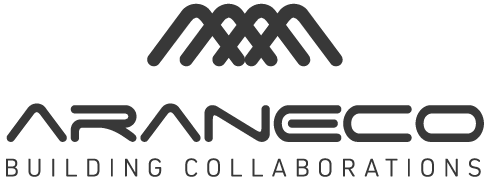Standard contact center metrics and key performance indicators (KPIs) help businesses track and measure the success of their customer experience—particularly as it relates to their call or contact centers.
But which KPIs are the most valuable and relevant to your contact center operation? Which can help boost agent productivity and bottom-line performance? And, most importantly, how do you improve them?
As we prepare to enter 2025, it’s crucial to ensure that our contact center is equipped to meet the evolving needs of our customers. By understanding and optimizing key metrics, we can position ourselves for success in delivering exceptional customer experiences.
This guide will explore 11 metrics to track and why they’re essential. Plus, we’ll share best practices for measuring, acting on, and enhancing your most critical KPIs.
What’s the difference between call center and contact center metrics?
Before jumping into it, let’s make an important distinction:
- Call centers are communication hubs that focus specifically on telephony. As such, most of the KPIs they track involve total calls, average call length, and other phone-based metrics.
- Contact centers are larger, more comprehensive, and increasingly omnichannel. In addition to telephony, they handle channels like social media, email, SMS, live chat, and more.
Despite their differences, the KPIs generally overlap. Most standard call center metrics are not only applicable but also beneficial to contact center operations. And, since 61% of people still prefer phone calls for customer service, they can’t be overlooked.
11 essential call center metrics and KPIs
You can break most metrics down into three categories:
- Customer experience (CX): CX KPIs help you measure customer interaction quality, which can impact how consumers feel about your brand—and in turn, customer loyalty. Low scores reflect poor satisfaction, whereas high scores represent happy, satisfied customers.
- Agent performance: This type of contact center KPI measures agent productivity and how well they’re handling each customer interaction. Why? Because agent performance directly impacts CX. These analytics, in turn, support quality assurance.
- Operational performance: Contact center performance metrics track the overall success of your operation within a given period. Improving performance metrics may reduce costs, increase profits, and enable you to deliver a better customer experience.
For each of these buckets, there are numerous KPIs you might track. Let’s narrow down your choices and explore 11 of the most valuable:
1. Call arrival rate
Call arrival rate refers to the total number of calls, or call volume, your contact center receives in a certain period. For example, a call center manager might measure call volume per minute, hour, day, week, or month, depending on their specific needs.
Analyzing call arrival patterns helps you anticipate peak periods of activity and adjust staffing levels accordingly. This makes it easier to maintain service level agreements and meet performance targets—plus, you can optimize workloads, avoid overwhelming employees, and reduce agent turnover.
2. Blocked call percentage
When agents are busy and unavailable to take an incoming call, customers are typically met with a busy tone. This counts as a blocked call because a customer couldn’t get through immediately. A high percentage of blocked calls may indicate a staffing or other organizational problem.
Even worse, it’s a frustrating customer experience. Consumers want fast, if not immediate, responses from brands. Speed positively impacts customer loyalty: According to Forrester, people are twice as likely to stick with companies that solve their problems quickly.
3. Average call abandonment rate
Your abandonment rate measures how many customers hang up before contacting a contact center agent. An abandoned call can happen for many reasons, which makes this tricky to analyze—but it’s essential nonetheless.
A rising abandonment rate signals dissatisfaction, which may be due to a high inbound call volume and too few agents around to answer. Tracking this metric over time will help identify potential causes and quantify the impact of any changes.
4. First response time (FRT)
FRT measures how long it takes before a customer is connected to an available agent. A slow average response time could indicate that there are too many cases for agents to handle, that agents aren’t acting quickly enough, or your technology capabilities are lacking.
Of course, a good FRT depends on the channel. According to CX Today, the industry standard for telephony is that 80% of calls are answered in 20 seconds or less.
5. First contact resolution (FCR)
First contact resolution measures the percentage of customer inquiries or issues resolved on the first attempt without the need for follow-up interactions. A high FCR indicates efficient problem-solving and customer satisfaction, whereas low scores suggest the opposite.
If you’re dealing with poor FCR, your agents may lack the resources to handle inquiries effectively. For instance, a lack of contextual understanding or customer data could make addressing problems at first contact challenging.
6. Average handling time (AHT)
As the name suggests, average handling time tracks the average time it takes agents to complete the customer interaction. It measures the entire duration of the engagement, including any after-call work agents must do to wrap up the case. Notably, there are other KPIs that can contribute to AHT, such as average call length or average hold time.
That said, high AHT doesn’t necessarily mean there’s a problem. The trick is reconciling speed and efficiency with excellent customer service. Employees who exceed handle time benchmarks may not be addressing customer needs as well as others who spend more time on the case.
7. Customer satisfaction (CSAT)
The customer satisfaction score, or CSAT, is a must-have contact center metric. CSAT scores measure customer satisfaction based on post-call surveys and feedback, usually on a scale-based system. For example, you can frame questions like this:
- On a scale of 1-10, how happy are you with your experience?
- How would you rate your satisfaction with the interaction? (Unsatisfied, somewhat satisfied, very satisfied).
Measuring CSAT scores can help managers with quality assurance by quantifying agent performance. However, qualitative responses are also valuable, as they give context to numerical data.
8. Net promoter score (NPS)
Net promoter score measures long-term customer loyalty. Like CSAT, it’s calculated through surveys, which you can send immediately after an interaction or some time afterward.
Most NPS surveys ask how likely the recipient is to recommend the company to others, rating their answer 1-10. This allows you to divide respondents into three groups:
- Promoters (score 9-10) are highly loyal customers who will likely recommend your company.
- Passives (score 7-8) are satisfied but unenthusiastic about your brand.
- Detractors (score 0-6) are unhappy with their experience and may discourage others from engaging with your business.
9. Customer effort score (CES)
Customer effort score measures how difficult it is for consumers to fulfill their needs when they contact your company. Generally speaking, CES helps you understand whether customers must jump through hoops to get what they want and resolve their issues.
Notably, customer effort score is related to loyalty. According to Gartner, only 37% of consumers remain loyal to a brand after a “high effort resolution.” On the other hand, 61% stay loyal if the experience is quick and easy.
10. Service level rate
Contact centers typically have service level agreements (SLA), which are standards used to uphold expectations and keep customers happy. For instance, on average, you might aim to answer emails within four hours or less or that all answered calls are resolved within 10 minutes.
Service level rates are a good way to track operational efficiency over time. They also help you identify patterns or areas of improvement.
11. Agent turnover
Turnover rates measure the percentage of employees leaving your company in a specific period, normally a year. The agent turnover rate is notoriously high for contact centers—twice that of other industries. There are many reasons someone might leave your company, but burnout is responsible for at least 50% of cases, costing organizations millions of dollars each year.
Tracking turnover is vital, not just for business performance but for employee well-being. A high churn rate could suggest agents are overwhelmed, possibly by call volume or other factors. It may even indicate operational or procedural issues that require fixing.
How to enhance metrics for a better contact center operation

Once you know what to measure, how do you boost your numbers? Here are some best practices for giving your contact center a lift:
Optimize call-handling processes
A great way to significantly drive improvements is by focusing on your call-handling strategies. Some measures you can take include:
- Streamline call routing and escalation processes to minimize hold times and ensure calls are directed to the most appropriate agent or department. Skills-based routing, for instance, can automatically distribute cases to employees based on their proficiencies, ensuring inquiries are handled effectively.
- Implement scripting and call flow guidelines to standardize interactions and ensure consistency in service quality.
- Encourage active listening and empathy among agents to build rapport with customers and enhance their overall experience.
Enhance contact center technology
Advanced platforms can provide a full suite of solutions tailored to call center operations and the customer experience. For example, Webex Contact Center allows you to:
- Leverage voice- and text-based virtual agents, automatic call distribution (ACD) systems, and more. These tools not only provide self-service options for customers to find answers independently but they also free human agents of mundane tasks.
- Use analytics tools to track and analyze metrics in real time, all from one convenient source of truth. Comprehensive dashboards make it easy to identify trends and make data-driven decisions.
- Harness artificial intelligence (AI) to empower agents with full contextual knowledge, past customer histories, suggested responses, and more. These capabilities reduce burnout while also maximizing agent productivity and improving customer satisfaction.
Gather and act on customer feedback
What better way to collect insights than your customers themselves? Webex Contact Center, you can:
- Implement post-call surveys or feedback mechanisms to feed data into your analytics dashboard automatically.
- Analyze customer feedback to identify recurring issues or areas for improvement and take proactive steps to address them, such as by coaching agents.
- Drive continuous improvement initiatives and prioritize those that will impact customer satisfaction most.
Give call center agents the tools they need to succeed
Measuring performance is easy with a comprehensive platform that automatically collects and analyzes data. With Webex Contact Center, you not only gain a fully featured suite of AI-powered capabilities but also the means to activate insights at scale. Generate reports, pinpoint patterns, and identify achievements—all from one pane of glass.
Ready to take your customer experience to the next level? Learn more about Webex Contact Center today.
The post 11 valuable contact center metrics to track in 2025 first appeared on Webex Blog.


